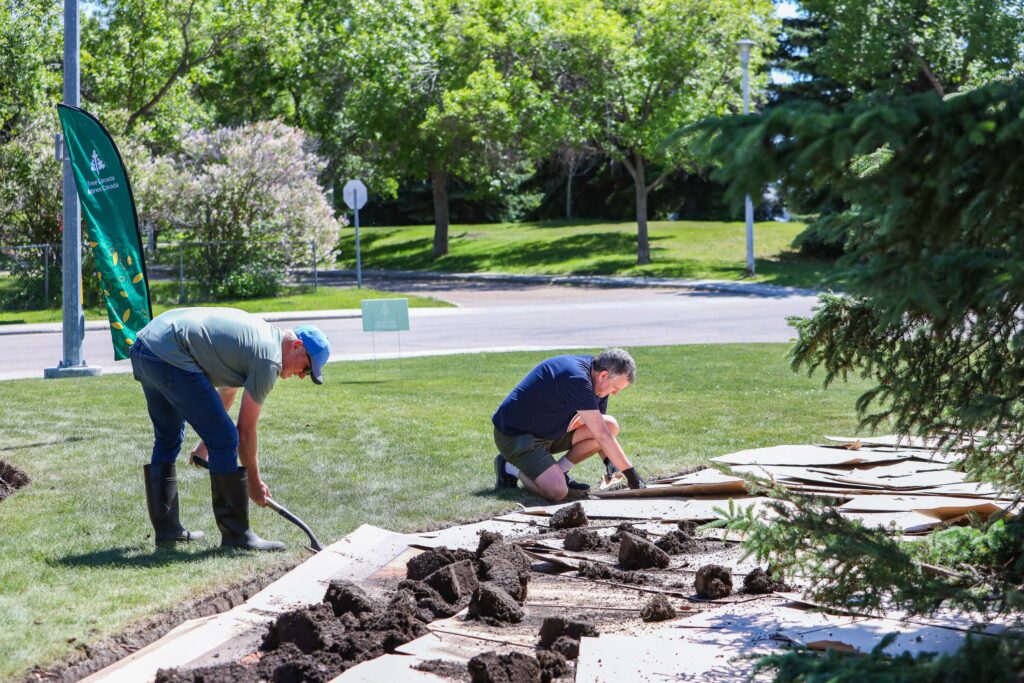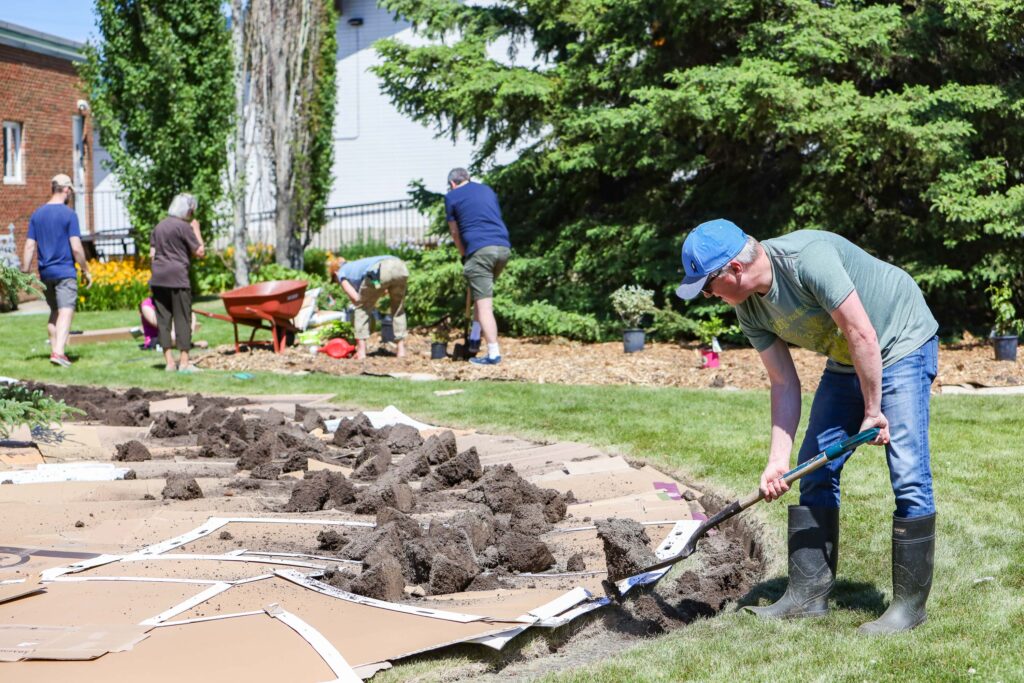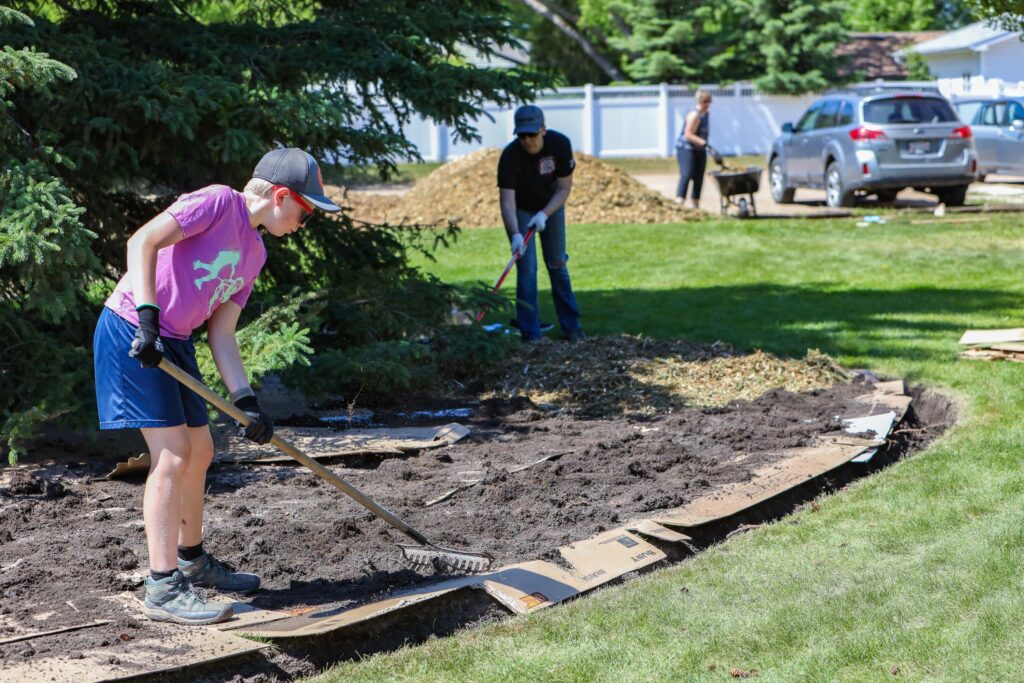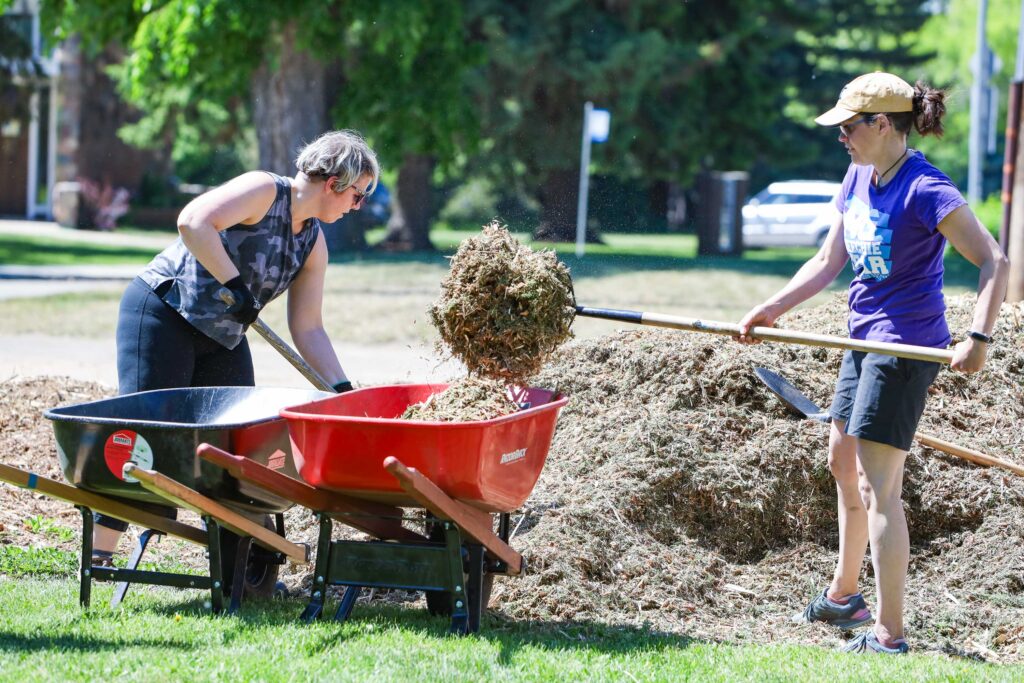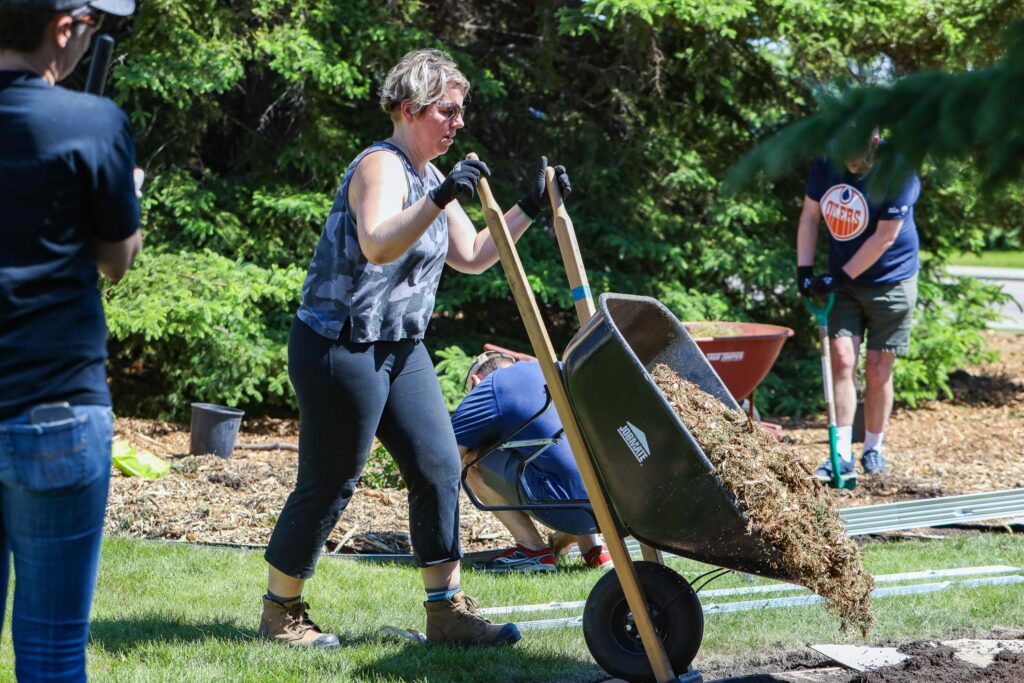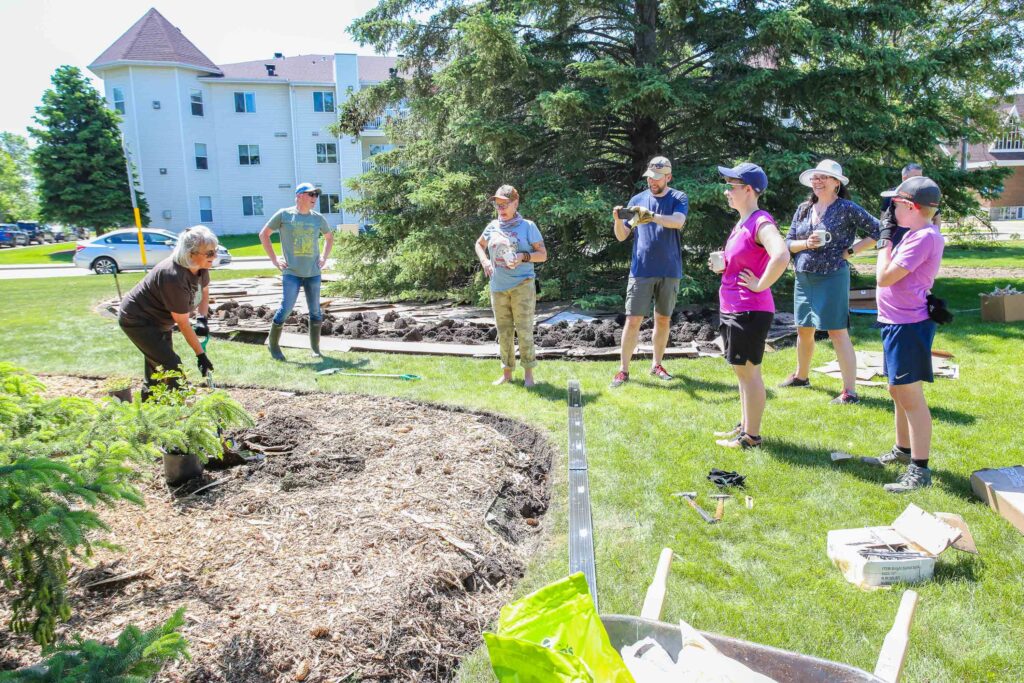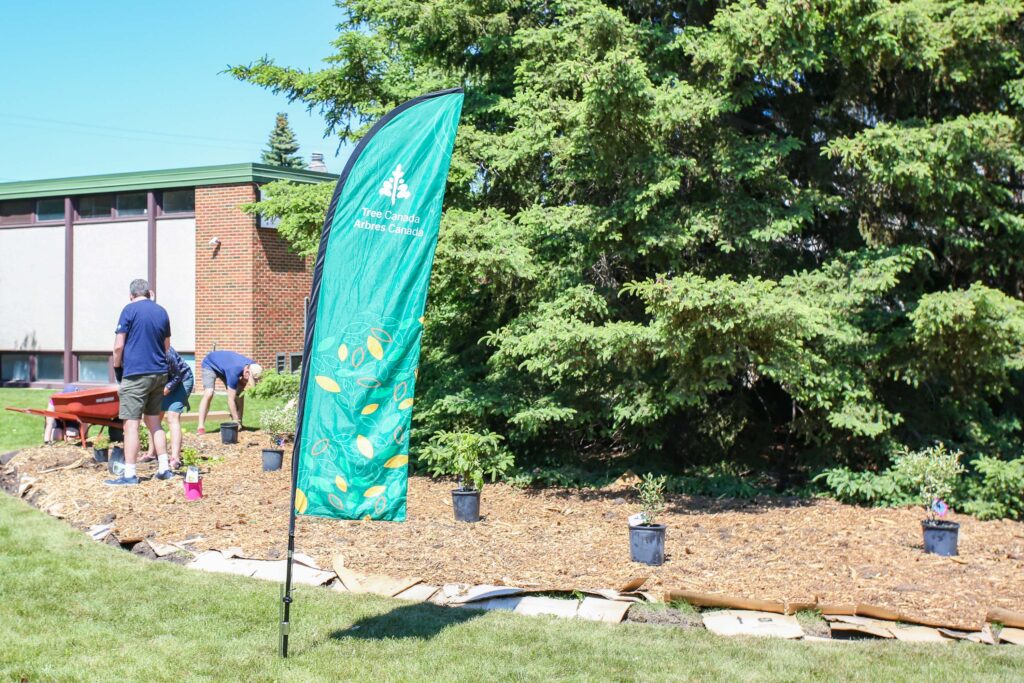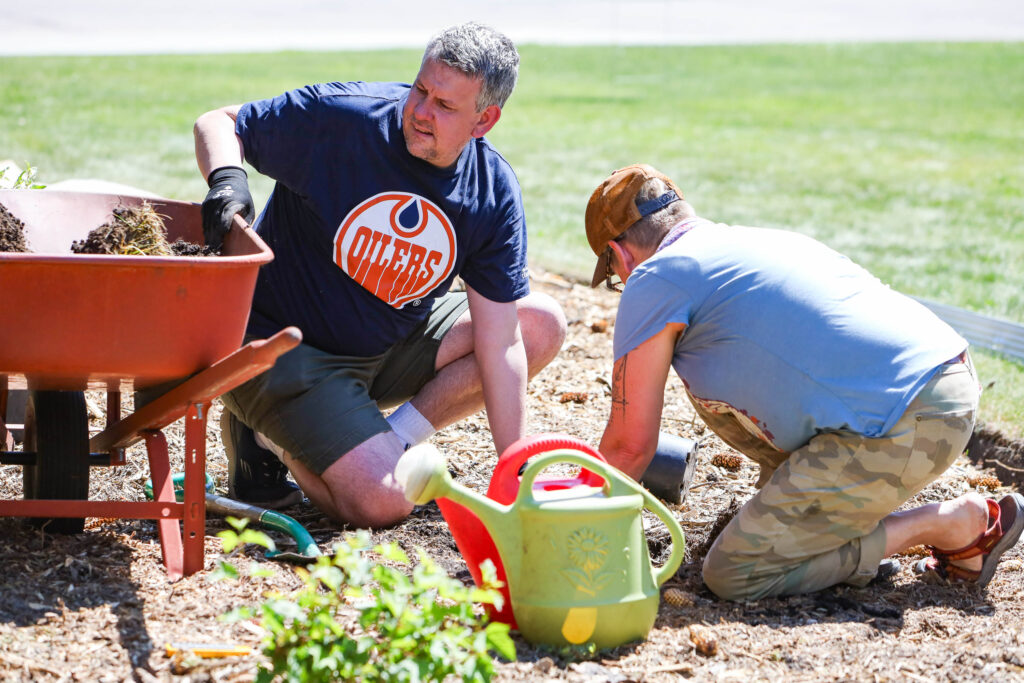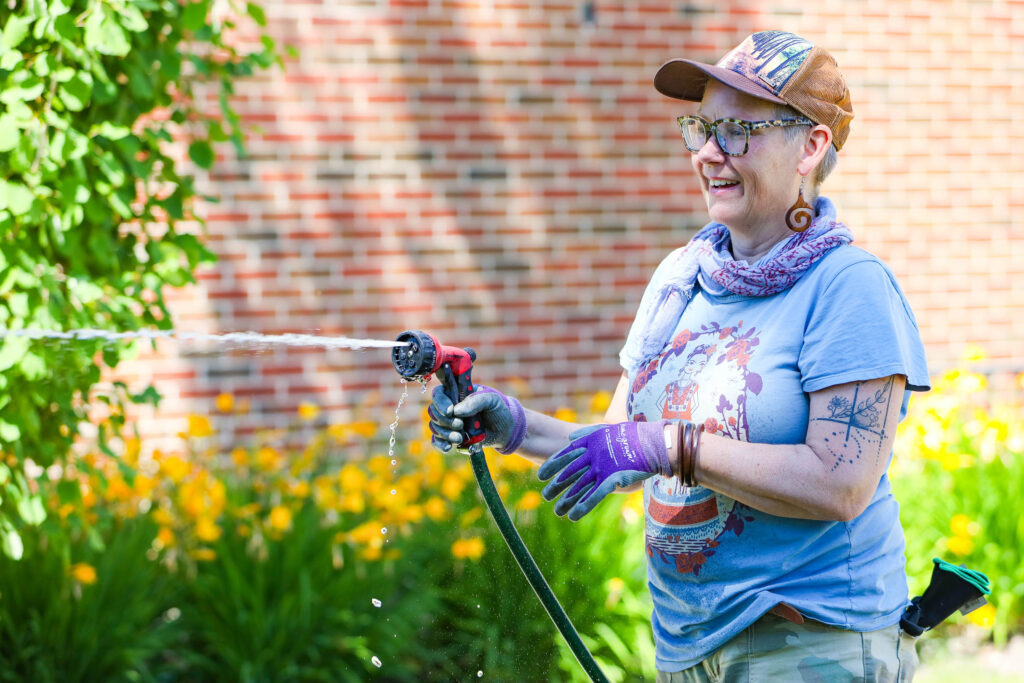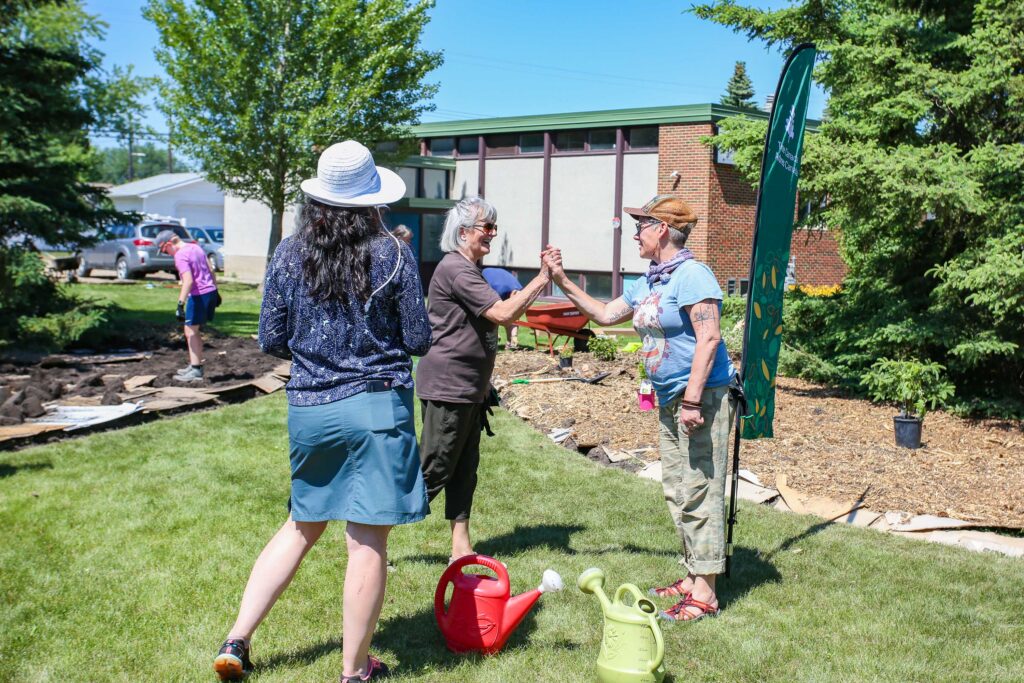Small Beginnings: Greening St. Augustine’s Anglican Church in Edmonton
Community volunteers are the backbone of many important greening initiatives across Canada. Their energy and dedication literally transform urban areas into natural spaces filled with life and beauty. But sometimes even the wildest dreams must be adapted to match the reality of time and money.
The Rewilding Committee, a group of dedicated volunteers in Edmonton, Alberta, received a $10,000 grant to add more greenery to St. Augustine’s Anglican Church, thanks to Tree Canada’s Community Tree Grant program and project sponsor, FedEx. The church grounds have long served as a community gathering space for events like harvest festivals, winter markets, and spring teas. While the project aimed to enhance the space by blending natural beauty and communal functionality, the initial plan did not unfold exactly as imagined.
Plan A: Bringing Nature Back
Plan A was ambitious! The Committee envisioned rewilding the southern portion of the land by planting native trees, shrubs, grasses, and herbaceous plants typical of an Aspen Parkland biome. They planned to convert a large section of the gravel parking lot into an Aspen Forest, while turning the front section into a wild grassland. The diverse range of species planned for the project included lodgepole pine, birch, willow, Scotch pine, tamarack, and various shrubs. Pathways, benches and event space were also included in the design.
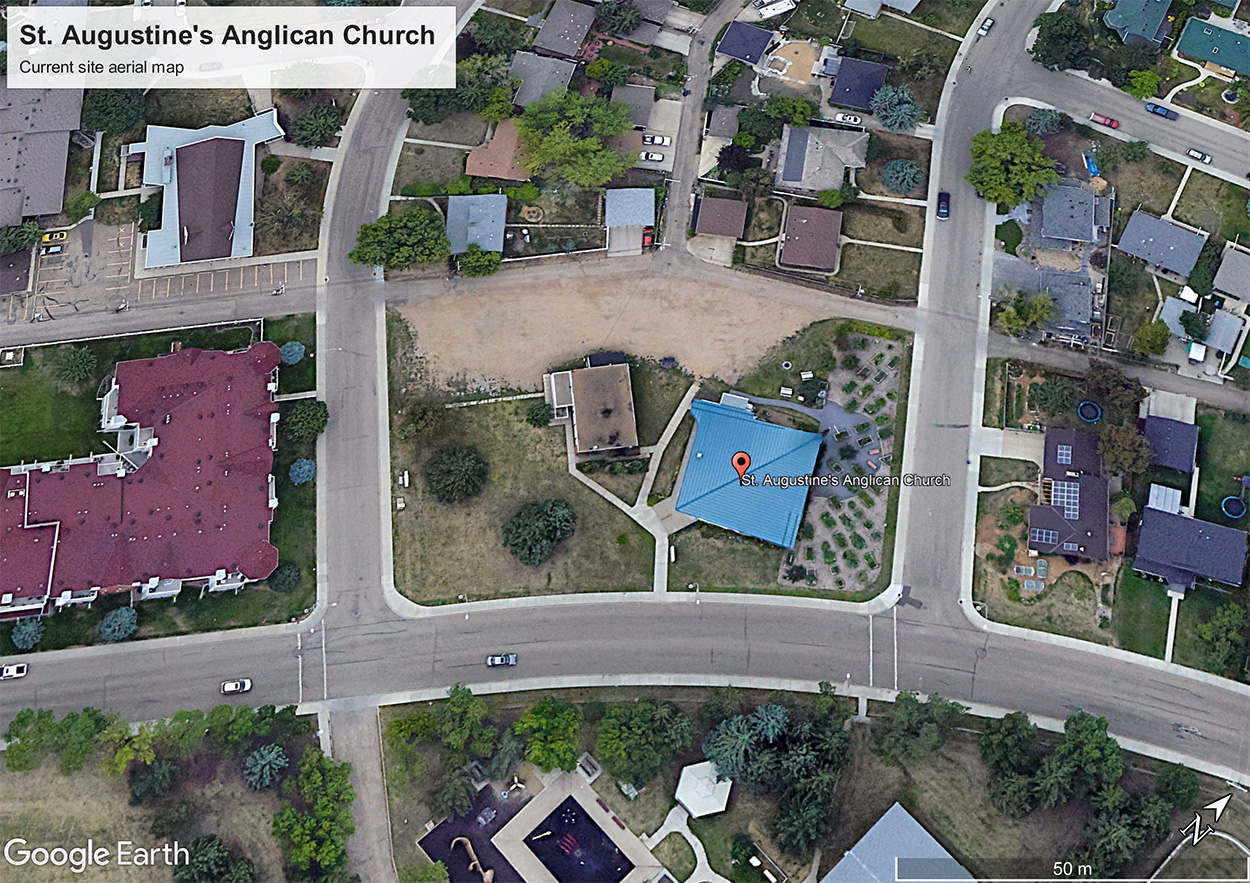
Arial view of St. Augustine’s Anglican Church, pre-planting | Created on Google Earth on August 20th, 2024
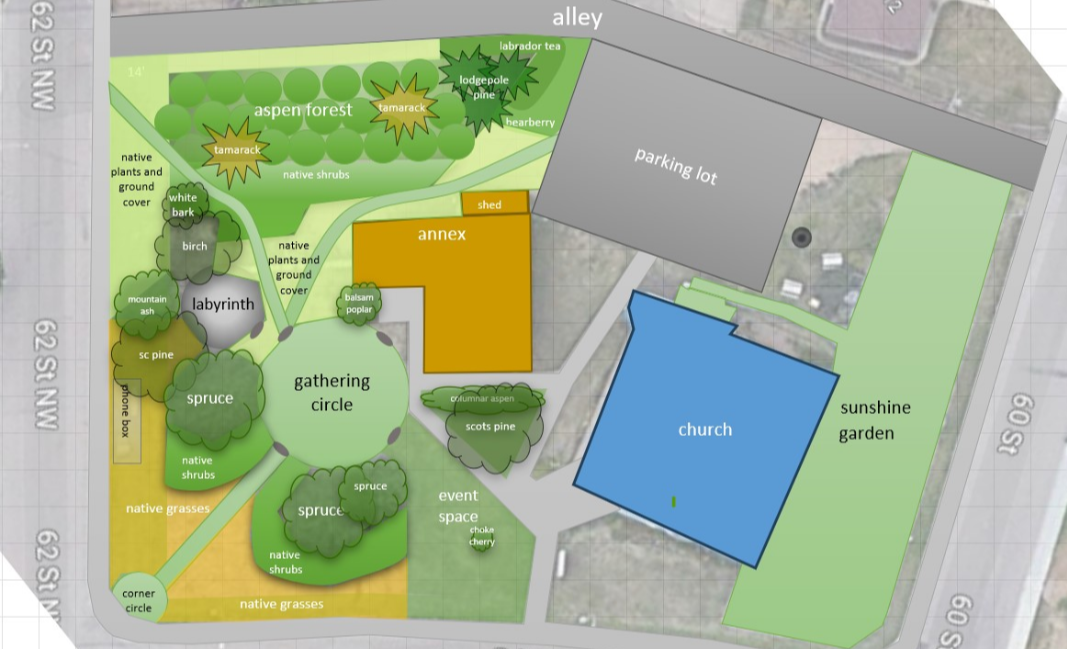
Landscape plan for the greening of St. Augustine’s Anglican Church in Edmonton | Courtesy of the Rewilding Committee
However, the road to rewilding wasn’t as smooth as expected. The project faced some pushback from community members, with concerns ranging from the loss of parking to the potential impact on beloved community events.
Rewilding Committee member, Christa McMillan, says the initial plan did consider the many other groups that use the space, whether for markets, outdoor church services or simply as a walking path. “We tried to consider the natural flow of users by not putting any trees where people gather. The way the design was made considered the community,” says McMillan.
In addition, the cost of removing the gravel parking lot proved more expensive than anticipated. After speaking with Sheila Flint, Tree Canada Forestry Specialist, and realizing that the grant amount wouldn’t be able to cover removing the gravel and purchasing trees and shrubs, the Rewilding Committee agreed to explore an alternative approach.
Plan B: A Community Space Embellished
Although the full rewilding dream couldn’t be realized in one year, the spirit of the project carried on. The Committee decided to focus on creating garden beds of native shrubs and bushes around the three large spruce trees.
McMillan and the team of volunteers scavenged for cardboard at recycling depots—even going dumpster diving to gather enough material before the planting began. “We needed to lay cardboard down as a barrier and dug trenches around the beds, all in an effort to keep the grass at bay,” she explained.
The garden beds were dug and planted over three days in June and completed just in time for the 90th birthday garden party of a beloved parishioner named Loretta. The timing couldn’t have been better, and the newly planted beds became a highlight of the celebration. “Nobody wanted Loretta to have a rubbish garden,” says McMillan.
Finding a Path Forward
Though the grander vision of an Aspen Forest and expansive wild grassland couldn’t come to life just yet, the improvements made are already adding value to the land as a gathering space. As these shrubs and plants grow, they’ll provide habitat for wildlife, and beauty for the community to enjoy.
In the Fall, the Rewilding Committee will use the rest of the grant money to plant more trees and shrubs around the property. It may be a small beginning, but the volunteers are hopeful that they can make their dreams come true in years to come.
“It might not be how we planned, but I believe it will happen,” says McMillan. “Just on a timeline that’s more achievable than we originally envisioned.”
Back to all articles
